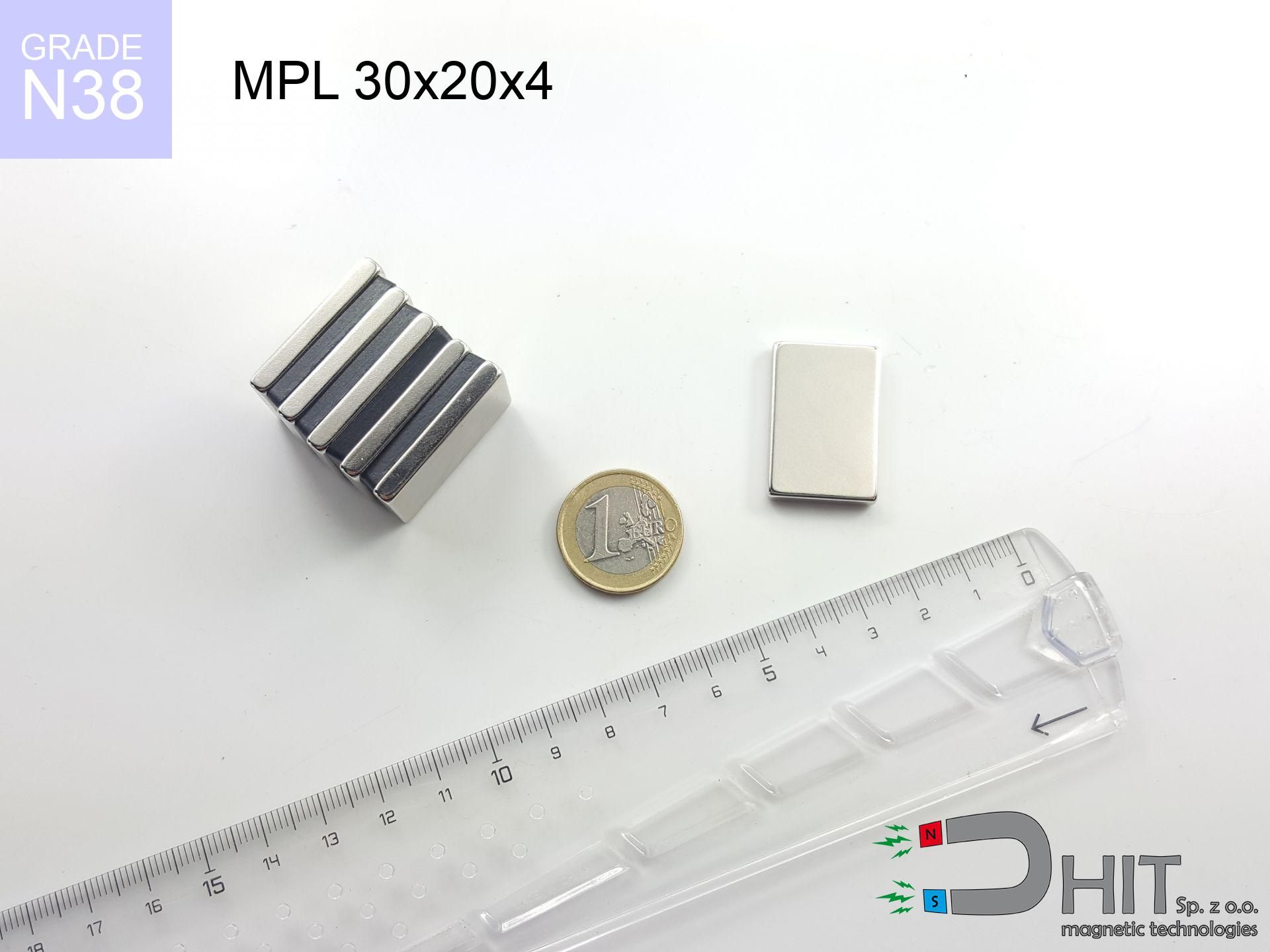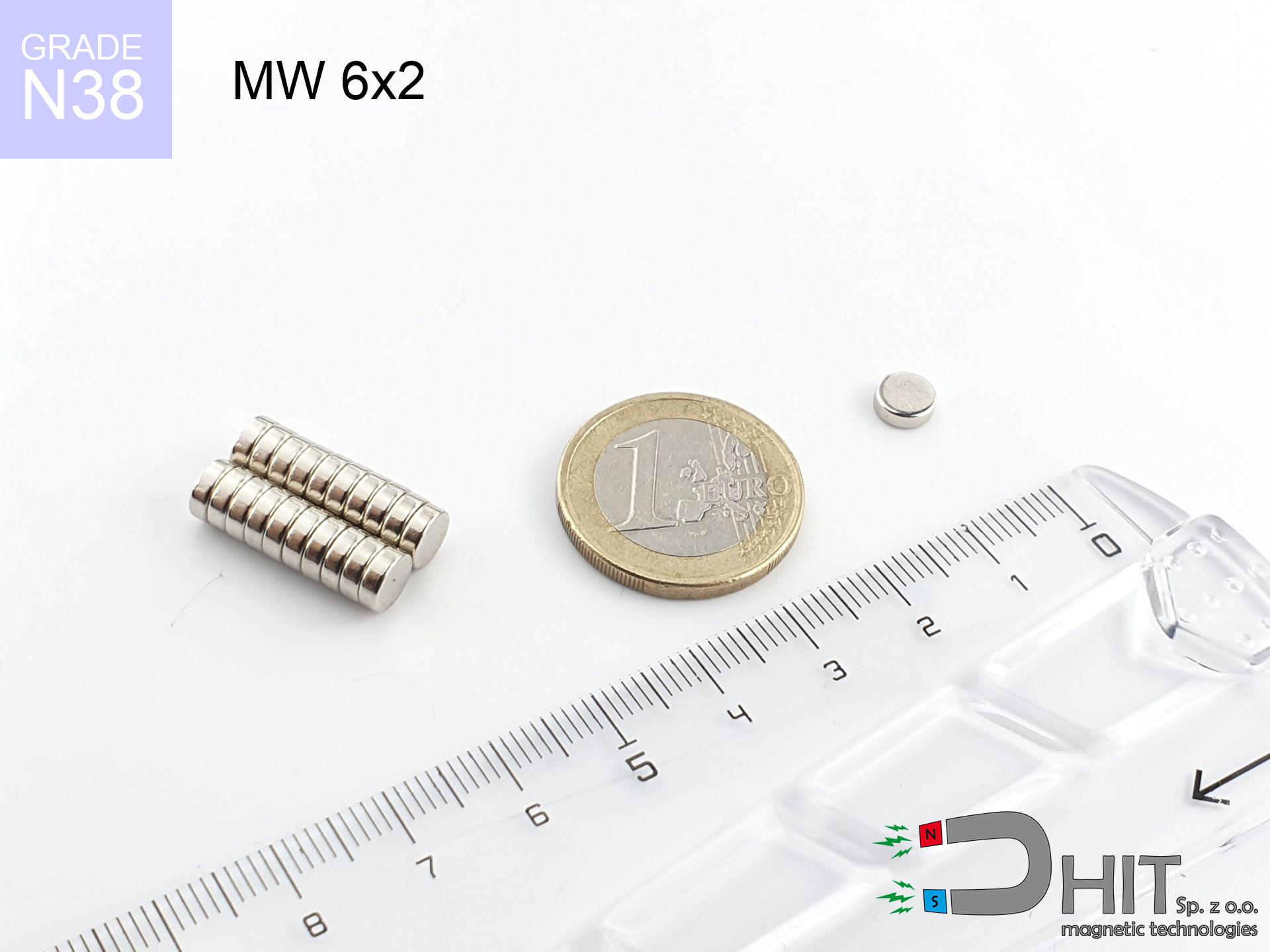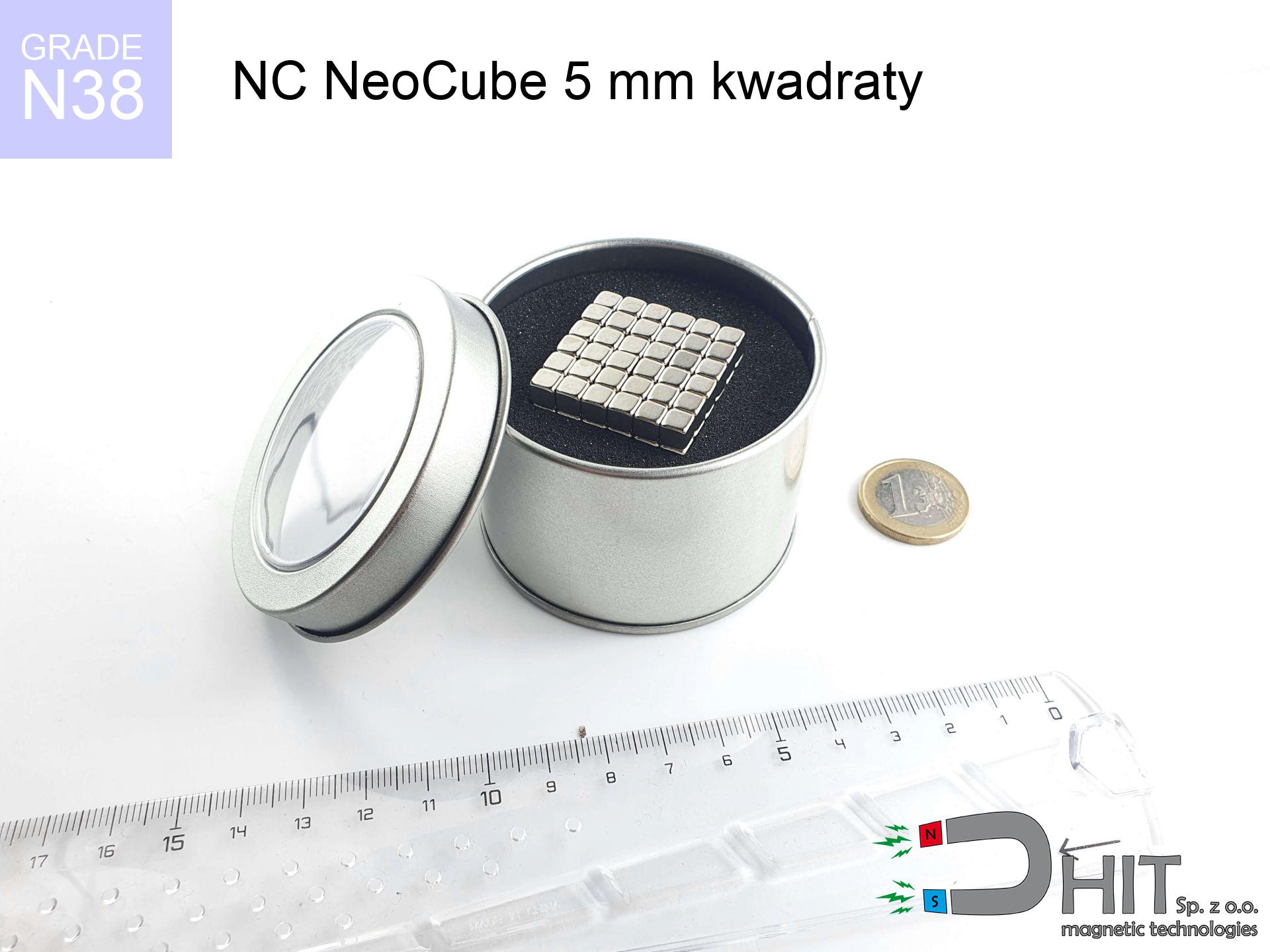MP 25x5x5 / N38 - ring magnet
ring magnet
Catalog no 030193
GTIN: 5906301812104
Diameter [±0,1 mm]
25 mm
internal diameter Ø [±0,1 mm]
5 mm
Height [±0,1 mm]
5 mm
Weight
23.56 g
Magnetization Direction
↑ axial
Load capacity
1.43 kg / 14.02 N
Magnetic Induction
322.94 mT
Coating
[NiCuNi] nickel
6.00 ZŁ with VAT / pcs + price for transport
4.88 ZŁ net + 23% VAT / pcs
bulk discounts:
Need more?Not sure where to buy?
Pick up the phone and ask
+48 22 499 98 98
otherwise let us know via
contact form
the contact section.
Parameters along with form of a neodymium magnet can be tested on our
force calculator.
Orders placed before 14:00 will be shipped the same business day.
Magnetic properties of material N38
Physical properties of sintered neodymium magnets Nd2Fe14B at 20°C
Shopping tips
Advantages and disadvantages of neodymium magnets.
Besides their stability, neodymium magnets are valued for these benefits:
- Their strength remains stable, and after approximately 10 years it drops only by ~1% (theoretically),
- They possess excellent resistance to weakening of magnetic properties when exposed to opposing magnetic fields,
- The use of an shiny layer of noble metals (nickel, gold, silver) causes the element to present itself better,
- The surface of neodymium magnets generates a unique magnetic field – this is one of their assets,
- Through (adequate) combination of ingredients, they can achieve high thermal strength, allowing for operation at temperatures reaching 230°C and above...
- Thanks to the potential of accurate shaping and adaptation to individualized solutions, magnetic components can be modeled in a variety of shapes and sizes, which amplifies use scope,
- Key role in high-tech industry – they are commonly used in computer drives, electric motors, medical equipment, and multitasking production systems.
- Thanks to efficiency per cm³, small magnets offer high operating force, occupying minimum space,
Characteristics of disadvantages of neodymium magnets: application proposals
- To avoid cracks under impact, we suggest using special steel holders. Such a solution secures the magnet and simultaneously increases its durability.
- When exposed to high temperature, neodymium magnets suffer a drop in force. Often, when the temperature exceeds 80°C, their strength decreases (depending on the size, as well as shape of the magnet). For those who need magnets for extreme conditions, we offer [AH] versions withstanding up to 230°C
- Magnets exposed to a humid environment can corrode. Therefore while using outdoors, we recommend using water-impermeable magnets made of rubber, plastic or other material resistant to moisture
- Due to limitations in realizing threads and complicated forms in magnets, we propose using cover - magnetic holder.
- Health risk resulting from small fragments of magnets can be dangerous, if swallowed, which gains importance in the context of child health protection. It is also worth noting that small elements of these devices are able to complicate diagnosis medical after entering the body.
- High unit price – neodymium magnets cost more than other types of magnets (e.g. ferrite), which can limit application in large quantities
Maximum magnetic pulling force – what contributes to it?
The force parameter is a measurement result performed under standard conditions:
- with the application of a yoke made of low-carbon steel, guaranteeing maximum field concentration
- with a thickness minimum 10 mm
- with an ideally smooth touching surface
- under conditions of no distance (metal-to-metal)
- during detachment in a direction perpendicular to the plane
- in stable room temperature
Lifting capacity in real conditions – factors
Real force is affected by specific conditions, mainly (from most important):
- Distance (between the magnet and the metal), because even a very small distance (e.g. 0.5 mm) results in a reduction in lifting capacity by up to 50% (this also applies to varnish, corrosion or dirt).
- Load vector – maximum parameter is obtained only during perpendicular pulling. The resistance to sliding of the magnet along the plate is standardly several times lower (approx. 1/5 of the lifting capacity).
- Metal thickness – thin material does not allow full use of the magnet. Magnetic flux penetrates through instead of converting into lifting capacity.
- Material type – ideal substrate is high-permeability steel. Cast iron may generate lower lifting capacity.
- Smoothness – ideal contact is possible only on polished steel. Any scratches and bumps reduce the real contact area, reducing force.
- Thermal environment – heating the magnet results in weakening of force. Check the thermal limit for a given model.
* Holding force was measured on the plate surface of 20 mm thickness, when a perpendicular force was applied, in contrast under parallel forces the load capacity is reduced by as much as 5 times. Moreover, even a slight gap {between} the magnet’s surface and the plate decreases the holding force.
Safe handling of NdFeB magnets
Shattering risk
Beware of splinters. Magnets can fracture upon uncontrolled impact, ejecting sharp fragments into the air. Wear goggles.
Dust explosion hazard
Mechanical processing of NdFeB material carries a risk of fire risk. Neodymium dust oxidizes rapidly with oxygen and is hard to extinguish.
Skin irritation risks
Studies show that the nickel plating (the usual finish) is a common allergen. If you have an allergy, prevent direct skin contact and opt for encased magnets.
Warning for heart patients
Health Alert: Neodymium magnets can turn off pacemakers and defibrillators. Do not approach if you have electronic implants.
Swallowing risk
Always store magnets away from children. Risk of swallowing is significant, and the consequences of magnets connecting inside the body are tragic.
Hand protection
Protect your hands. Two powerful magnets will snap together immediately with a force of massive weight, crushing everything in their path. Exercise extreme caution!
Heat warning
Do not overheat. Neodymium magnets are sensitive to temperature. If you need resistance above 80°C, look for HT versions (H, SH, UH).
GPS Danger
Navigation devices and mobile phones are extremely sensitive to magnetism. Direct contact with a strong magnet can ruin the sensors in your phone.
Powerful field
Handle magnets consciously. Their huge power can surprise even professionals. Be vigilant and respect their force.
Magnetic media
Very strong magnetic fields can destroy records on credit cards, hard drives, and other magnetic media. Stay away of min. 10 cm.
Warning!
Want to know more? Check our post: Are neodymium magnets dangerous?






![SM 32x175 [2xM8] / N52 - magnetic separator SM 32x175 [2xM8] / N52 - magnetic separator](https://cdn3.dhit.pl/graphics/products/sm-32x175-2xm8-cep.jpg)


